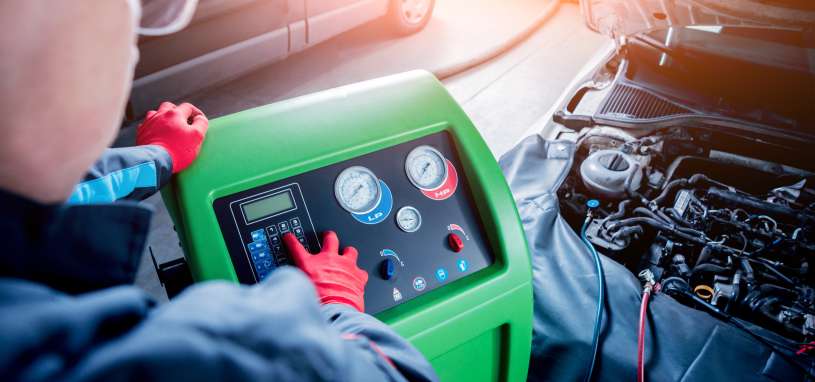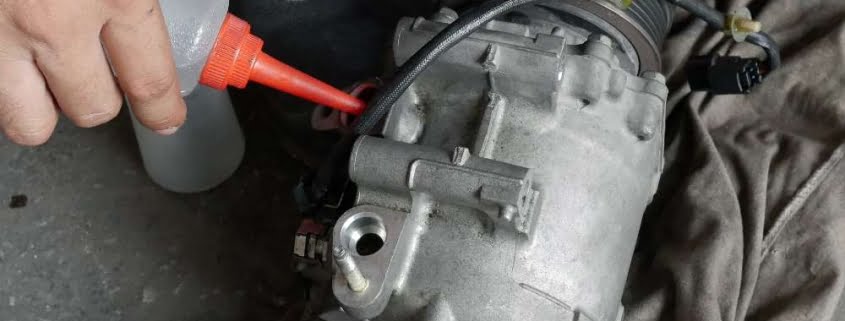How does a car AC compressor work?
The AC compressor is the heart of your car’s air conditioning system, playing a crucial role in keeping your cabin cool and comfortable. By compressing and circulating refrigerant, the compressor enables the entire system to function effectively, removing heat and delivering cold air. But how does it all come together?
Understanding how your car’s AC compressor works can help you identify potential issues early and ensure your system stays in top condition. Let’s dive into the mechanics behind this essential component.
Natrad cooling specialists can perform air conditioning repairs and servicing on your vehicle. Whether you just need the regular check up, re-gassing or replacement of parts – Natrad’s got you covered.
Understanding how a car AC compressor works
The AC compressor is the powerhouse of your car’s air conditioning system. It compresses refrigerant gas, increasing its pressure and temperature, and sends it to the condenser to begin the cooling process. This component relies on a belt-driven pulley and a clutch system to engage and disengage as needed, ensuring efficient operation. By maintaining consistent refrigerant flow throughout the system, the compressor plays a vital role in keeping your cabin cool and comfortable, especially during hot weather.
How does the aircon system work?
The air conditioning system contains several parts that work together to keep you cool (or warm). Below, we will cover the overall function of the AC system and delve deeper into the compressor.
To begin with, we’ll identify the different parts of the system. Depending on the state of the refrigerant, there are 2 different sides.
- High pressure
- Low pressure
The refrigerant flows through the AC system in a continuous cycle. It starts at the compressor, moves to the condenser, then to the receiver drier, followed by the expansion valve, and finally reaches the evaporator before starting the cycle again.
Pressure explained
The AC system operates through two distinct pressure zones: the high-pressure side and the low-pressure side. Here’s how the process flows:
- High-Pressure Side:
- The cycle begins at the compressor, where cold refrigerant gas is compressed, increasing its pressure and temperature. This creates a hot, high-pressure gas.
- This hot gas moves to the condenser, where it cools as it passes through the condenser’s tubes and fins. The cooling process transforms the refrigerant into a high-pressure liquid.
- The liquid refrigerant then travels to the receiver drier, where moisture is removed to protect the system from corrosion and blockages.
- Transition to Low Pressure:
- From the receiver drier, the refrigerant flows to the expansion valve. Here, the high-pressure liquid is converted into low-pressure, cold refrigerant.
- Low-Pressure Side:
- The cold, low-pressure refrigerant is sent to the evaporator, where fins on the evaporator come into contact with warm air inside the cabin. This heat exchange causes the refrigerant to evaporate, returning it to a gas state.
- This gaseous refrigerant then travels back to the compressor, and the cycle repeats, continuously cooling your car.
This seamless process ensures your car’s AC system delivers the cool, refreshing air you rely on during hot days. By keeping all components in good condition, your AC can work efficiently for years to come.
General system
Each system may vary slightly per vehicle. For example, some may include an orifice tube whereas others have an expansion valve. This means the system has up to 7 components including:
- Compressor: compresses cool refrigerant gas into hot refrigerant gas
- Condenser and fan: converts hot refrigerant gas into a hot liquid at high pressure
- Receiver Dryer: temporarily stores refrigerant when not needed by the system
- Expansion (TX) Valve / Orifice Tube: regulates refrigerant flow / creates pressure drop
- Evaporator: cools air before entering cabin
- Heater Core: warms air before entering cabin (uses engine coolant rather than refrigerant)
- Blower Motor: fans hot or cold air into the cabin
Refrigerant circulates through this closed loop system, passing through each individual part, which is eventually leads to air blown into the cabin of the car.

Compressor
As we outlined above, the compressor is the heart of the air conditioning system. Much like a real heart, it pumps the “blood” (refrigerant) through each of the other components and ensures it continues circulating. It is driven by a belt and pulley system attached to the engine crankshaft.
It is one of the two moving parts in the system aside from a TX valve. This means a compressor is more susceptible to wear and tear or failure than static parts. If it has failed, it will need to be replaced as it can damage other components in the system.
Signs & symptoms of a faulty car air conditioning compressor
Some urgent indicators that something is wrong with your compressor include:
- Weird noises: could be caused by worn or broken belts/pulleys. There are several other issues that may need to be addressed promptly.
- The smell of burning: likely the wiring of the compressor is damaged or burnt.
- Leaking under the dashboard: A clogged hose or drain could be to blame. Age and moisture can also cause system leaks.
If you notice any of these, it is imperative that the problem is fixed as quickly as possible. Natrad has a range of compressor kits suitable for all vehicles.
Need a new compressor? Let the team at Natrad help
Bring your car to the cooling specialists at Natrad. With a network of stores nationwide, you can find a convenient location near you.

What we’ll do:
- One of our qualified auto air conditioning technicians will use test equipment on your car to measure the internal system pressures and begin diagnosing the problem.
- Your car’s entire air conditioning system will be inspected to locate any failed components and to determine if any other parts have suffered damage or contamination.
- If necessary, the refrigerant gas present in your air conditioning system will be extracted and stored before any parts are removed for replacement or cleaning.
- Our after-market parts either meet or exceed original equipment specifications, and a nationwide warranty supports all our work and parts.
- With the air conditioning system reassembled, the correct amount of refrigerant and oil will be added.
For more information on our air conditioning repairs and replacements, contact us today.









